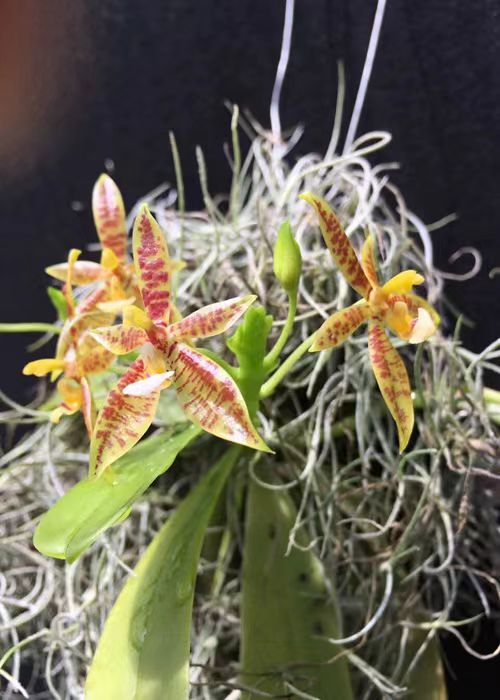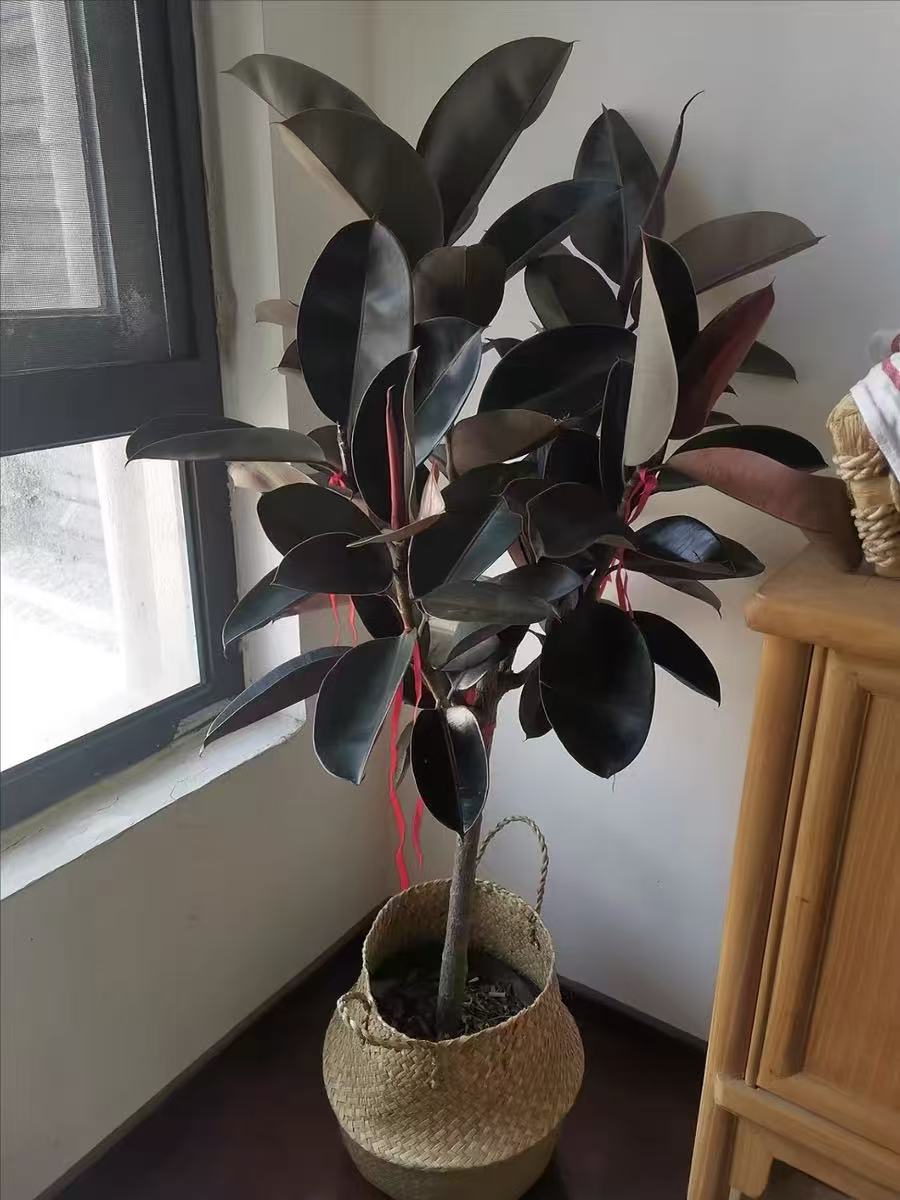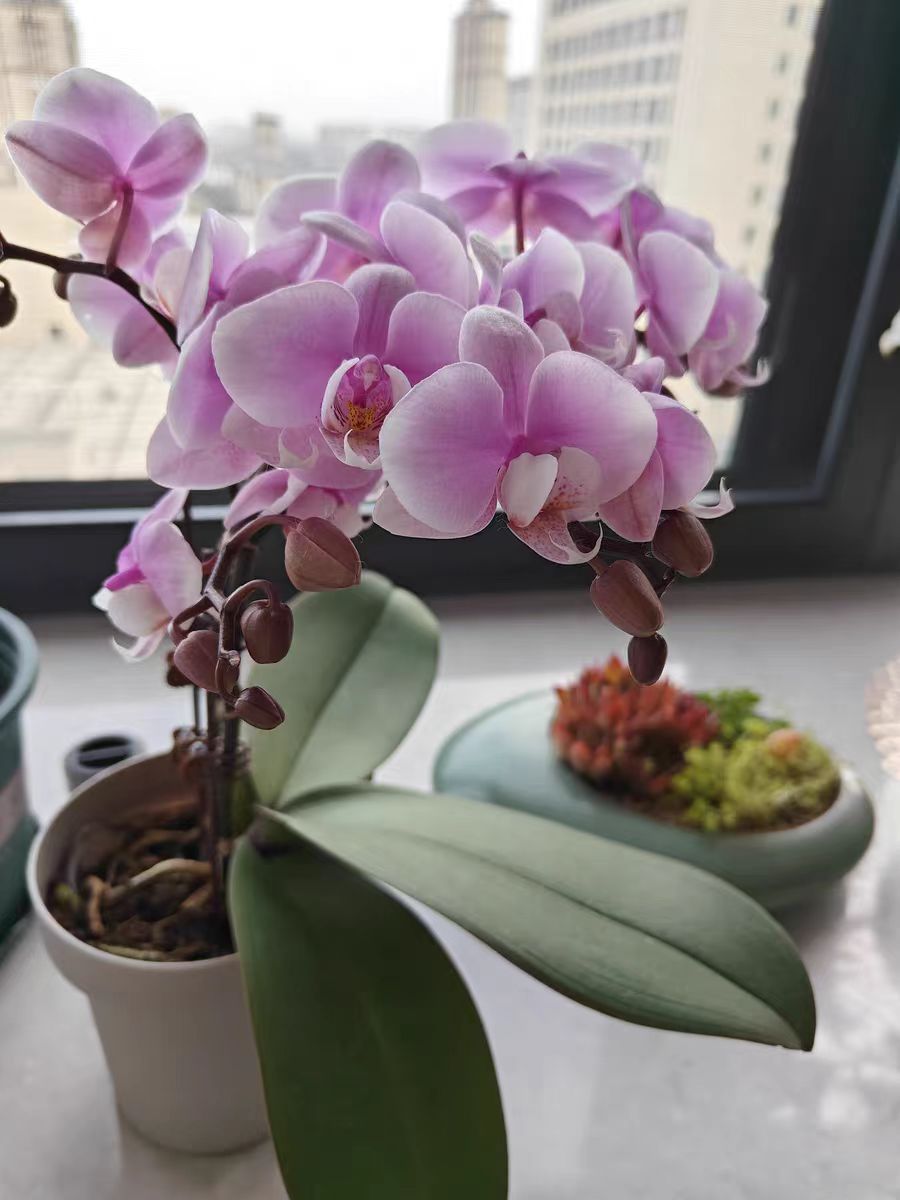Phalaenopsis cornu-cervi, as a treasure among orchid plants, attracts the attention of many flower lovers with its unique form and charming flowers.
In terms of morphology, the leaves of Phalaenopsis cornu-cervi are mostly oblong, with smooth lines. The leaf length is generally about 20 centimeters, and the size is moderate. Secondly, the texture of the leaves is slightly succulent, which gives them a certain thickness and flexibility, allowing them to better store water and nutrients and adapt to different growth environments. In terms of color, the front side of the leaves is usually fresh light green, full of vitality, while the back side is mostly a striking purple. This unique color difference between the front and back adds a distinctive ornamental value. Moreover, the surface of the leaves is shiny, smooth and flat. Under the reflection of light, it appears particularly bright, further highlighting the texture and health status of the leaves. Overall, the leaves of Phalaenopsis cornu-cervi have become a major feature of this plant with its unique form, texture, color and luster.
The leaves of Phalaenopsis cornu-cervi show a unique purple color, and this phenomenon is caused by multiple factors. First, the accumulation of anthocyanins is a key factor. Anthocyanin is a natural pigment, and changes in its content and type can affect the color of the leaves and cause them to appear purple under certain conditions. Secondly, the influence of light conditions cannot be ignored. Sufficient but not overly strong light helps the synthesis and accumulation of anthocyanins. Insufficient or overly strong light may lead to abnormal leaf color. Thirdly, temperature also plays a role. Lower or higher temperatures may change the internal physiological processes of the leaves, affecting the generation and distribution of pigments, thereby causing the leaves to appear purple. Fourthly, the nutritional components of the soil, especially the content of certain trace elements, can affect the color of the leaves. The lack or excess of specific elements may interfere with the formation of pigments. In conclusion, the purple color of the leaves of Phalaenopsis cornu-cervi is the result of the combined action of multiple factors. Understanding these factors is of great significance for cultivating and appreciating this beautiful plant.
What are the characteristics of the leaves of Phalaenopsis cornu-cervi?

Share with
Tagged in :




Leave a Reply